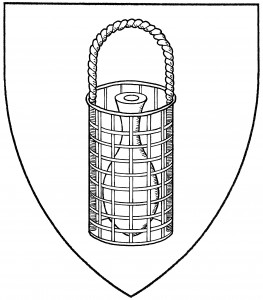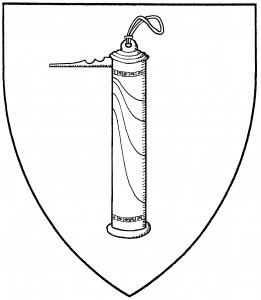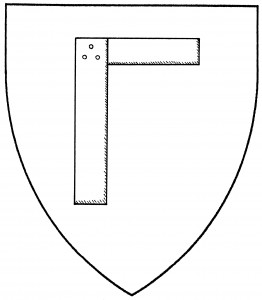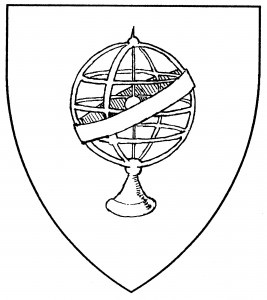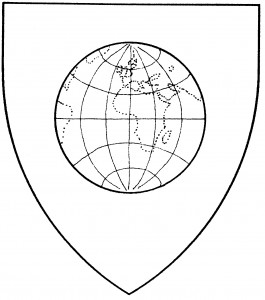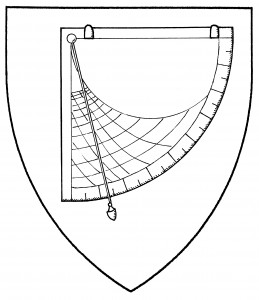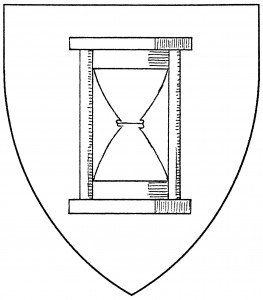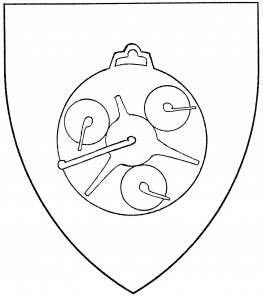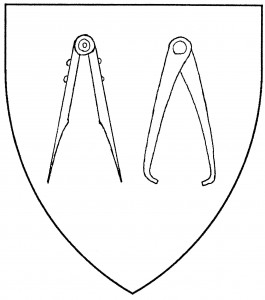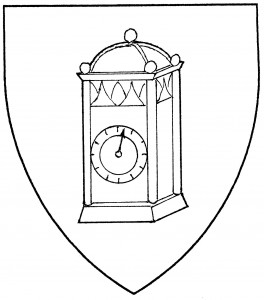
Flask (Period)
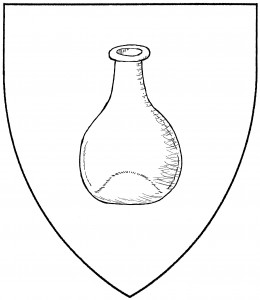
Phial (Period)
A flask is a vessel, usually of glass or ceramic, with a constricted neck and a broad base. Generally, the term implies a laboratory vessel, used for chemical or alchemical procedures: the illustration is taken from de Bara, 1581 [132], who blazons it as un thalame philosophal. The flask is a period charge, found in the canting arms (Italian fiasco) of Fiaschi, c.1550 [BSB Cod.Icon 278:305].
There is also the “phial”, intended to hold small amounts of fluid (frequently for medicinal use). Phials are found in the arms of Adam de Rous, surgeon, 1379 [DBA3 42], and cited in Bossewell, 1572 [II.117]. The Society also has a similar charge, the “ampulla”, a small two-handled bottle used for relics, holy oil, &c. It’s smaller and more spherical.

Alembic flask (Accepted)
One specific type of flask is the “alembic flask”: used for distillation, it has a long sloping spout. It should not be confused with an “alembick”, which a post-period term for another charge altogether; for this reason, Society heraldry explicitly blazons it an “alembic flask“. It’s also frequently blazoned a “retort”, especially when drawn with a smooth, unbroken surface. As a charge, the alembic flask/retort seems to be unique to Society armory; its spout is to dexter by Society default. For related charges, see bottle, urinal.
The Alchemy Guild of the Barony of Rivenstar bears: Quarterly gules, azure, vert and sable, a retort reversed purpure fimbriated Or.
Vasco Pereira de Faria bears: Per bend Or and argent, an alembic flask vert.
Robert of the Angels bears: Azure, on a bend cotised between two flasks argent, a recorder, bell to chief sable.
Lorenzo Alhambra bears: Vert, on a chevron between three flasks argent, two salamanders combattant vert enflamed gules.
Michael Tryggve bears: Purpure, an ampulla Or, billety vert.
